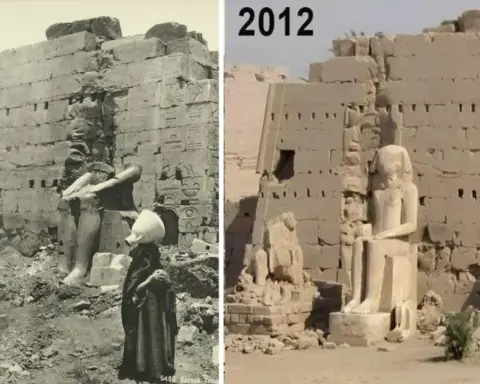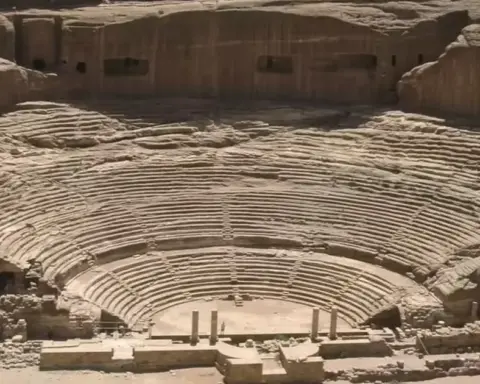Nestled in the heart of India, the Chand Baori is not just an architectural wonder but a gateway to the past, offering a glimpse into the ingenuity and spirit of ancient civilizations. This colossal step-well, located in the village of Abhaneri, Rajasthan, stands as a testament to the architectural prowess and cultural heritage that has been a part of India’s rich history for over a millennium. As we delve into the depths of Chand Baori, we uncover its historical significance, architectural marvels, and the sacred symbolism it embodies, enveloped in a mystery that has captivated the imagination of many.
A Glimpse into the Past
Over 1,000 years ago, the foundation of Chand Baori was laid, marking the beginning of an era that would see the creation of one of the world’s largest and most intricate step-wells. Originally designed to provide a reliable water source in the arid landscape of Rajasthan, Chand Baori became much more than a mere reservoir; it evolved into a center for social gatherings, and religious ceremonies, and a symbol of communal resilience.

Architectural Marvels Unveiled
The true essence of Chand Baori lies in its breathtaking design and construction. Plunging 100 feet into the earth and adorned with 3,500 symmetrically placed steps, it forms a staggering pattern that resembles an inverted pyramid. This meticulous arrangement of steps, divided into 13 floors, is not only a testament to the advanced engineering skills of ancient craftsmen but also serves a practical purpose. As one descends into the well, the air becomes noticeably cooler, offering a sanctuary from the relentless heat of the desert above.
The architectural sophistication of Chand Baori extends beyond its functionality. The walls and platforms are embellished with intricate carvings and sculptures that depict mythological scenes and aspects of daily life, bridging the gap between the divine and the mundane.
Symbolism and Spirituality

Chand Baori transcends its utilitarian origins, embracing a deeper spiritual significance. The step-well serves as a sacred space for contemplation, its design reflecting ancient principles of symmetry and balance. The alignment of its steps and the strategic placement of architectural elements are imbued with meanings that connect the earthly to the divine, making Chand Baori a reservoir of water and spirituality alike.
Tourism and Preservation
In the wake of its growing popularity as a tourist destination, Chand Baori faces the dual challenge of accommodating visitors while preserving its ancient structure. Conservation efforts are crucial to safeguarding this architectural marvel, ensuring that it can withstand the ravages of time and human impact. These initiatives aim to keep the essence of Chand Baori alive for future generations to explore and admire.
Exploring Abhaneri

The village of Abhaneri, home to Chand Baori, is a treasure trove of historical and cultural significance. Sites like the Harshat Mata Temple complement the step-well’s allure, offering visitors a comprehensive view of the region’s heritage. Exploring Abhaneri not only enriches one’s understanding of Chand Baori’s place in history but also highlights the symbiotic relationship between architecture and spirituality in ancient Indian society.
Conclusion
Chand Baori stands as a beacon of India’s architectural and cultural legacy, its 3,500 steps descending into the annals of history. It embodies the resilience, creativity, and spiritual depth of the communities that thrived in the face of environmental challenges. As we traverse its ancient steps, let us be mindful of our responsibility to preserve this monumental testament to human ingenuity and faith, ensuring that the mysteries of Chand Baori continue to inspire awe and wonder for generations to come.






